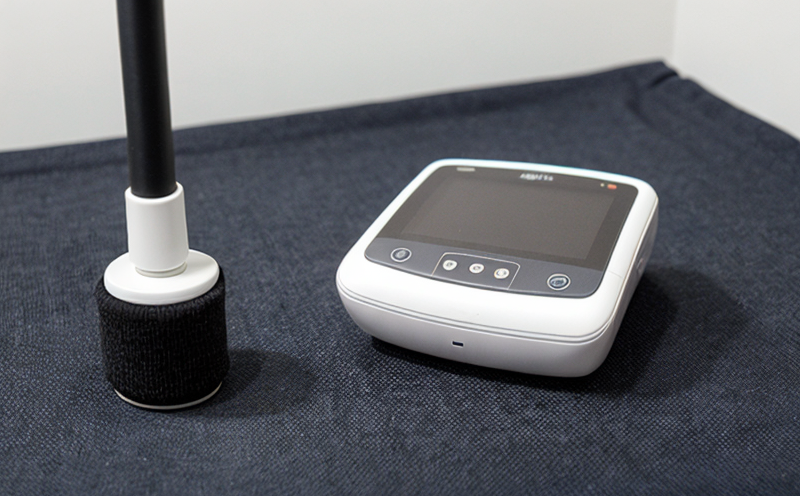BS 6529 Resistance to chemical permeation of functional protective fabrics
The BS 6529 standard is a crucial benchmark for the textile industry, specifically designed to evaluate the resistance of functional protective fabrics against chemical permeation. This test measures how effectively textiles can prevent hazardous chemicals from passing through their surface layers under specified conditions. The significance of this service lies in its direct impact on worker safety and compliance with international standards.
Functional protective fabrics are integral to industries where employees are exposed to chemical hazards, such as manufacturing, healthcare, laboratory environments, and emergency services. These textiles serve a dual purpose: they provide physical protection against mechanical stress while ensuring that harmful chemicals remain confined within the work environment. The BS 6529 test ensures that these fabrics meet stringent standards for chemical barrier integrity.
The testing procedure involves exposing the fabric sample to various chemicals under controlled conditions, then measuring the amount of each chemical that permeates through it over a set period. This data helps manufacturers and users assess the durability and reliability of their protective clothing against real-world scenarios. Compliance with BS 6529 enhances trust in the products and supports regulatory adherence.
The standard is widely recognized for its rigorous approach to evaluating fabric performance, making it an essential tool for quality assurance departments within organizations. By adhering to this test, manufacturers can demonstrate their commitment to worker safety and environmental responsibility. For compliance officers and R&D engineers involved in material science or product development, understanding the nuances of BS 6529 is paramount.
One key aspect of this service is the preparation of specimens for testing. Samples must be cut according to specific dimensions outlined in the standard, ensuring consistency across different batches. Proper specimen preparation ensures accurate and reproducible results. The test also requires precise control over environmental factors such as temperature and humidity during exposure periods.
Instrumentation plays a critical role in conducting BS 6529 tests accurately. Equipment used may include permeation chambers that maintain consistent pressure and temperature levels, sampling pumps to collect permeated chemicals, and analytical instruments capable of detecting minute amounts of the target compounds. Advanced optical sensors can provide real-time monitoring during exposure periods.
Reporting from these tests is comprehensive, detailing not only the chemical resistance values but also any deviations observed during testing. This information aids in identifying areas for improvement in fabric design or manufacturing processes. Additionally, compliance reports help establish trust with regulatory bodies and customers alike.
Scope and Methodology
| Chemical | Description | Test Conditions |
|---|---|---|
| Acetone | Common solvent used in many industrial applications. | Exposure at 30°C for 24 hours. |
| Sodium Hydroxide (NaOH) | Strongly alkaline substance often found in cleaning agents. | Exposure at 50°C for 168 hours. |
| Hydrochloric Acid (HCl) | A highly corrosive acid used in various manufacturing processes. | Exposure at room temperature for 7 days. |
The BS 6529 test scope encompasses multiple chemicals, each representing a different type of hazard encountered by workers. The methodology involves exposing fabric samples to these chemicals under controlled conditions and measuring the amount that permeates through them over specified durations. This comprehensive approach ensures thorough evaluation of various chemical threats faced in diverse industrial settings.
The testing process begins with selecting appropriate specimens based on industry requirements or regulatory stipulations. Once prepared, fabrics are placed inside specialized chambers where they undergo exposure to targeted chemicals at predetermined temperatures and time intervals. During this period, continuous monitoring is conducted using advanced instrumentation that captures even trace amounts of permeated substances.
International Acceptance and Recognition
- The BS 6529 test is highly regarded globally, particularly in regions with stringent occupational safety regulations.
- Many international organizations, including OSHA (Occupational Safety and Health Administration) in the U.S., recommend or mandate compliance with this standard for protective clothing used by workers exposed to chemicals.
The widespread acceptance of BS 6529 reflects its value as a robust assessment tool for chemical barrier performance. Compliance enhances confidence among employers, employees, and regulatory authorities regarding the effectiveness of functional protective fabrics against hazardous exposures.
Environmental and Sustainability Contributions
- Promotes safer disposal practices by ensuring that textiles meet stringent chemical resistance standards.
- Encourages innovation in fabric design to enhance barrier properties without compromising other performance attributes like breathability or comfort.
Better chemical resistance translates into reduced risk of environmental contamination from improperly discarded protective garments. Moreover, improved barrier efficiency can lead to longer garment life cycles, reducing waste generation and promoting sustainable practices throughout the supply chain.





